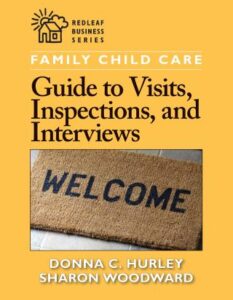Early Intervention Visits
This topical guide will introduce you to important books, videos, and information resources available from the EI Clearinghouse and other sources. Contact us via online form or by phone (1-877-275-3227) to request a resource listed below (or ask your local public librarian). Note that some videos may be viewed online, and journal titles will take you to the publisher’s homepage.
Table of Contents

EIC Resources
This guide includes information on the Illinois Early Intervention (EI) Program, why EI services are important, how to find out whether your child is eligible for the EI program, starting and leaving EI services, your legal rights, and questions frequently asked by families.
Books

This book includes case studies featuring more than twenty common challenges that can occur during visits and skill-based solutions and successful strategies you can use to prepare for those situations.
his book emphasizes the importance of family-professional relationships when working with young children. This book gives examples on how to work with parents and bring them in as a part of the collaborative team, noting that the child benefits the most when families and professionals work together effectively.
This book explains to parents how early intervention works and how to best help their child. This book covers when and how to start early intervention, treatment models, parent-child interaction, and much more.
This book is about digging deeper and looking closer at what it takes to have successful relationships with each and every family. The authors explore seven partnership concepts, brought to life through the words and perspectives of families and professionals themselves.
This practical guide provides examples and best practices for building relationships with families and facilitating adult-child interaction.
With a focus on how families and professionals can collaborate effectively so that infants and toddlers learn, grow, and thrive, this book reflects research and best-practices in the field of early intervention. The book includes a chapter on assessment and planning outlining how parents and professionals can work together throughout the process.
This book is a compilation of information for professionals who conduct home visits. Expectations are explained and situations that the professionals may encounter during home visits are explored. The book discusses ideas for how to build the bonds between professionals and families. Several sections discuss difficulties and dilemmas that some professionals have dealt with during home visits.
Videos and Media
This video shows what early intervention visits are like. It includes descriptions of typical routines, parent coaching, and the primary provider model. (English and Spanish options)
This DVD demonstrates how to facilitate family-centered interactions between the service providers and the families of the children they’re working with. Strategies and specific skills are given so that these services can be provided in the most effective way in the child’s natural home environment.
This video focuses on research/preparation; respect/recognition of the important of the family and acknowledgement of their values; and rapport/building a partnership committed to meeting the needs of the child.
This video includes examples of early intervention home-visiting approaches that reflect a variety of routine-based, family-centered strategies and activities used by two interventionists for children with different learning needs.
This seminar demonstrates how sensory, motor and play activities impact self-regulation, social skills and development. Learn cutting-edge, brain-based information and techniques for kids who exhibit difficult behaviors.
Organizations
No resources have been added to this section yet. However, new resources are added frequently!Articles
This article outlines the three things that need to be considered for high-quality home visits: dosage (frequency), content, and relationships.
Web Resources
This short article discusses three essential components of a home visit through the lens of a case story.
Both the early care and education (ECE) and home visiting (HV) fields build on the central role of families in support of their children’s development. Both fields increasingly view opportunities for family engagement along a continuum, and increasingly focus on meaningful ways to engage families.
ZERO TO THREE strongly urges policymakers to continue supporting the expansion of evidence-based home visitation programs, so the diversity of families who need support can access it in a culturally appropriate manner.

